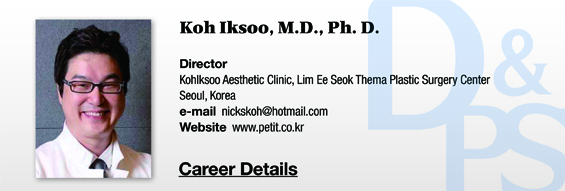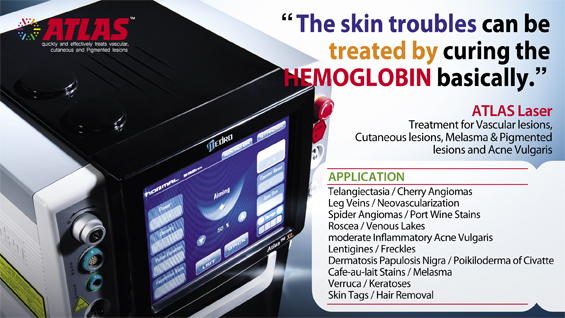Stylage is another filler that has excellent efficacy. It is stable, has various uses and easy administration. Its clear labeling of S, M, L, and XL makes it easier for the user to select the filler according to the desired use. Personally, I think Stylage offers the most benefits per cc purchased. Glytone (Pacificpharma) is also a very good product.
I recommend Glytone, Perfectha (DNC) and CUTEGEL rather than Restylane and Juvederm for beginners who are starting out in this field. It is better to gain experience with relatively affordable fillers and advance into Juvederm or Restylane. Especially, CUTEGEL is very affordable but has the efficacy of medium-priced fillers. Meticulous quality control by the manufacturer can improve the quality of this filler further.
Restylane is a steady seller that has been established as a standard in the industry. It has the best safety profiles among all products currently available. I have used Restylane since its first release and have yet to encounter a case of tissue response or side effects.
This does not mean any filler can be 100% good. Various manufacturers including Korean companies are developing products with excellent or even better safety and convenience than Restylane or Juvederm. Many other fillers boast better physical properties and injectability than these products.
As each filler has unique advantages and disadvantages, any filler can be an ideal choice of treatment once indications are identified. Imported fillers are generally thought to be superior, however, Korean products also boast comparable technology. When safety profiles improve, Korean fillers can also become leaders of the industry.
[Advertisement] ATLAS(Long pulse 532nm & 940nm dual wavelength) – Manufacturer: MEDRO(www.medro.net)
BOX
Evaluation of Pacific pharma’s Cleviel based on six criteria
I plan to evaluate fillers through various means. As part of this project, I have chosen Pacific pharma’s Cleviel as the first item to be evaluated based on the criteria I explained in the previous article.
There are two product lines of Cleviel available in the market; Contour and Volume.
1. Initial swelling: Is there severe swelling 1-2 days after injection? Swelling can be caused by inadequate pH levels or cross-linking agent toxicity, or endotoxin content. Swelling could be a good non-laboratory indicator for the safety of the product.
- Both the contour and Volume caused no initial swelling.
2. Hydration: HA fillers contain water. How much water is good for efficacy?
The post-procedure volume can be determined depending on the water content of the product. Should the doctor stick to the accurate dose? Or, should he inject slightly less considering the swelling from hydration? The duration of hydration is also important.
Contour: Of the fillers that I have used so far, Cleviel Contour has the least amount of hydration. The injected volume is pretty much maintained. On the other hand, this requires more caution during injection as any miscalculation will also be maintained.
Volume: This is Contour with more hydration. Personally, I prefer Volume to Contour in areas other than the nose.
3. Shape: How long is the initial shape maintained?
Soft fillers offer ease of administration but do not maintain the shape well. Hard fillers are easier to handle and have lasting effect but are difficult to shape. The maintenance of the initial shape over long-term is very important.
- In terms of shaping, I would like to give highest marks to the two fillers. Cleviel Contour maintains the injected shape for the longest. Cleviel Volume grows a little larger than the injected shape after hydration but the shape is maintained well.
4. Convenience of use: The convenience of use is determined by injectability and moldability, etc. Understanding of hard and soft filler properties can help adjust the techniques accordingly. Generally, hard fillers offer poor convenience than soft fillers.
- Two products are both hard fillers but can be easily injected with a 23G needle. However, molding is difficult with both products. This is because they are harder than traditional fillers and are focused on maintaining the shape.
5. Longevity: Longevity is one of the most important aspects of fillers. Follow-up for over a year is needed to assess longevity.
- Cleviel Contour has been shown to last for 1-1.5 years. Cleviel Volume is currently being examined but I expect the longevity to be similar to that of Contour.
6. Safety: Safety cannot be over emphasized. Currently, the biggest problem with safety of fillers is the risk of granuloma, a type of tissue response to filler materials. A filler product that seems safe at first can later cause frequent swelling and hardening, etc. leading to granuloma. Such fillers should not be used
- No inflammation or tissue response has been seen with either of the two fillers.
7. Indication
- Contour: Nose
- Volume: All areas requiring hard fillers except for the nose.
8. Contraindication
- Two fillers are a lot harder than previous hard fillers. It is advisable to avoid injecting these fillers in shallow areas where the filler material can easily be felt.
-The End-





















